Between an image of a woman making it rain money on payday or a step-by-step breakdown of how to mend a broken heart (get your nails done, reverse the sadness through a high-intensity workout, and block and unfriend your ex on social media), 28-year-old Stephanie Rodríguez could be peeking into your world and illustrating the highs and lows of your everyday life. In reality, the Bronx-born comic bases her art off of her own life, illustrating incredibly relatable details.
“My comics come from my life experiences,” she tells Remezcla. “The topics can span from dealing with breakups to growing up Latina in NYC. I want the reader to say, ‘Oh yeah, I totally went through the same thing.’ It’s very important for me to make that connection with the reader.”


It sounds like such a simple concept: Draw about topics that are part of everyday life and home in on those universal feelings. But it took Rodríguez years, and plenty of trial and error, to find her voice.
The Bronx native knew she wanted to become an artist as early as kindergarten. In those years, she doodled her favorite Nickelodeon cartoons. Eventually, she graduated to writing and creating her own stories. By middle school, she had conceptualized a series called Friends Forever, which followed how four BFFs dealt with all the drama that comes with being a teenager.
And even though Stephanie began gravitating to creating stories about day-to-day occurrences in her early teen years, when she began the School of Visual Arts, she didn’t know what she wanted to do. “I kinda went in there like, ‘Oh, children’s books are cute. Maybe I could do that,'” she remembers. “So I went into the illustration major thinking that I was gonna do children’s books illustrations, which I was doing for the first couple of years of college. Then, because of the major, they were pushing us to do illustrations for editorial, which is very competitive, and I just didn’t feel comfortable with it. It just didn’t seem like the right thing.”
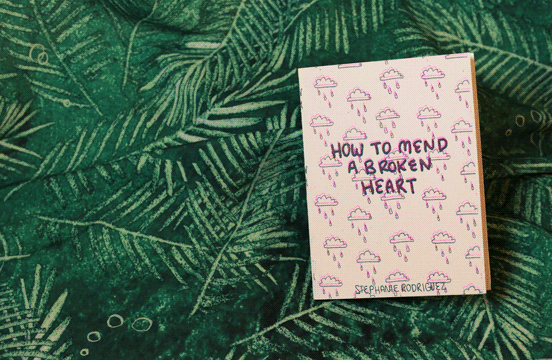
Between her sophomore and junior year of college, she began hanging out at the library, checking out graphic novel after graphic novel. She found Gilbert Hernández’s Luba – which “had drama, romance, and complex family dynamics” that reminded her of the novelas she grew up watching – and she became hooked. She did her junior thesis in the form of a comic and thought that it was the right path for her art.
But she still stumbled. Right before she graduated, the head of the illustration department told her she should focus on more Latino-centric art. “He said, ‘I think it would be great if you were doing illustrations [just focusing] on Latino culture, maybe you should do illustration portraits of Rosie Pérez.’ I think it’s one of the reasons why I got stuck for a couple of years after graduation, because I was forcing myself to make work like that, and it just wasn’t what I wanted to do,” she says.
After graduating, she struggled to find a job she loved. As she saw some of her classmates get work with publications like The New York Times, she felt that her art style didn’t really fit anywhere. She bounced around working retail at different shops and taking low-paying graphic design jobs, and she didn’t feel happy. It affected her art. “I started lots of illustrations, and never finished them due to frustration,” she adds.
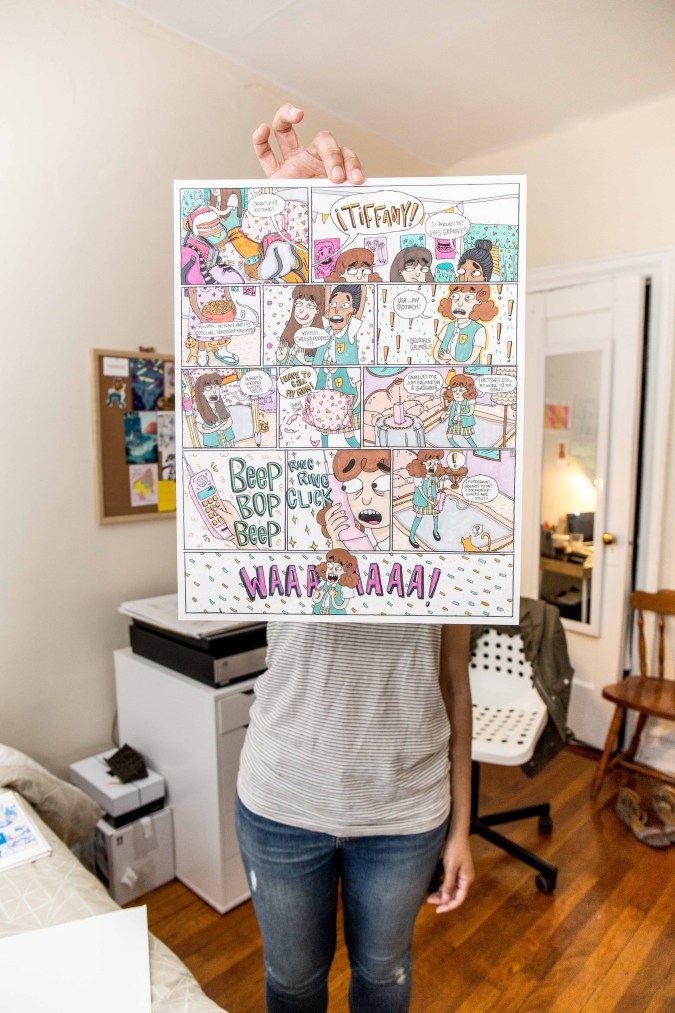

Once she got a full-time job that offered her benefits, she felt financially stable. That’s when her art started flourishing. “I was able to create art without the pressure of it being my main source of income,” she says. With a full-time career, she learned how to do self-publish her comics and sell them at festivals.
After being laid off earlier this year, she began taking other projects, including working with middle school students as part of an initiative with the City of New York. That ended up taking so much of her time that she began creating daily comics and posting them onto her Instagram account. Pretty soon after, BuzzFeed hit her up.
“[With BuzzFeed,] I’m able to basically do the exact same thing, but on a bigger platform with a bigger audience than I could ever imagine,” she says. “I don’t think I would have been able to reach that many people if it weren’t for BuzzFeed. It’s very exciting. They give me so much leeway. It’s basically, they really love things that are relatable. I usually give them multiple ideas and some of them are very specific to me, and some aren’t. It’s still being true to myself. I’m not changing my work because it’s on BuzzFeed, and that’s very important.”
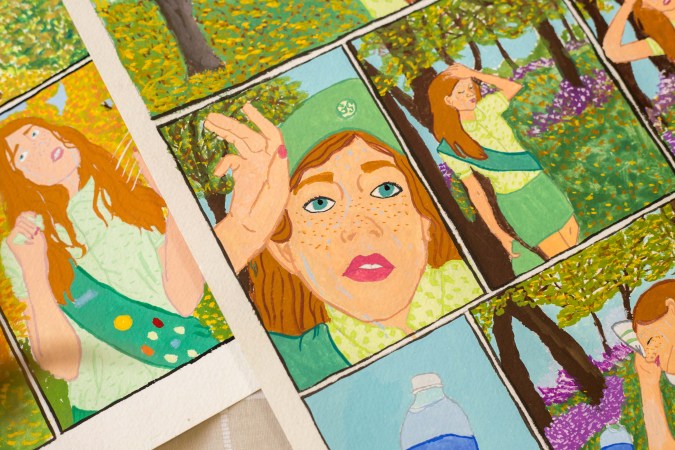
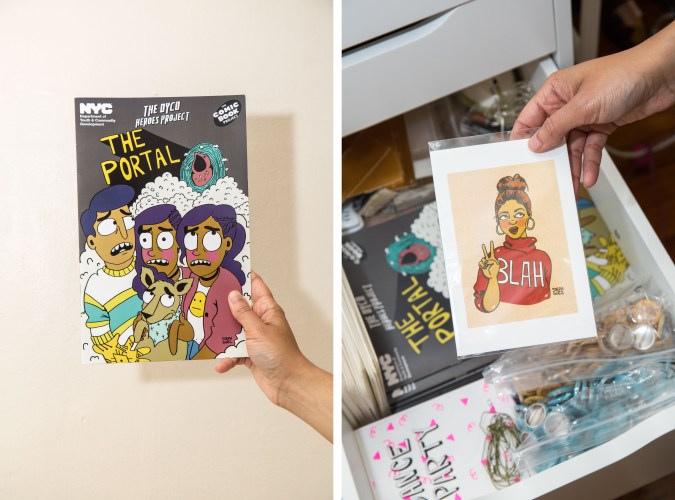
For many Latinos, her No te hagas la pendeja comic – where she tells the story of growing up with a strict mother – will resonate. The comic, which takes place in 1999, follows her having to suddenly go to a classmate’s house to finish a project. Despite knowing that it’s not something her mother would approve of, she goes, only to get an earful from her mother later. And though so many Latino kids grew up knowing that their parents didn’t want them en casa ajena, her comics are about more than her Latinidad.
Recently, she illustrated a piece for Comics for Choice, an anthology of comics about abortion. Paired up with a Venezuelan woman named Daniela, Stephanie told the story of how she, who works in the women’s reproductive health world, decided to have an abortion. With the articles Daniela had written on the topic and through a series of conversations with her, Stephanie’s piece ended up reflecting very specific details, like the fact that Daniela spent $60 on pregnancy tests and papaya, the food she was craving.
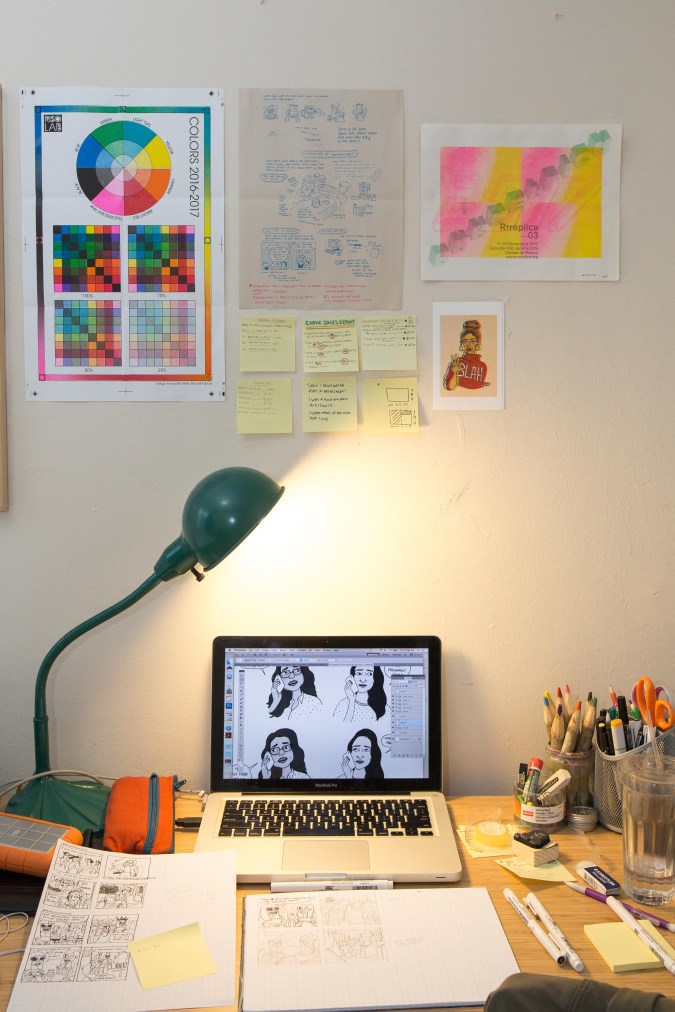


Then, there’s Lil’ Shorties – a three-part comic that looks at anxiety, slut shaming, and The Bachelor. All of the vignettes are taken from her life, because autobiographical comics have helped her through rough moments.”The motivation to share stories about anxiety comes from reading comics that struck me emotionally when I needed it the most,” she says. “To read an autobiographical comic and relate to what the artist is writing about made me feel at ease about whatever I was going through. It made me feel like I wasn’t alone. I want my readers to have the same feeling.”
In her Sunset Park work-space studio, Stephanie is working on her next artistic transformation. As she learns to become a freelance illustrator full time, she’s also beginning to test the waters with animation. And even though she’s expanding her art into different mediums, her genuine storytelling will remain a constant.
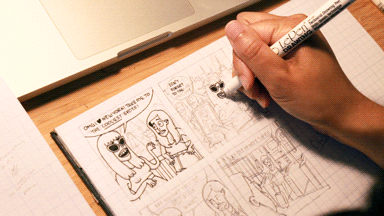
Additional reporting by Itzel Alejandra Martinez.




